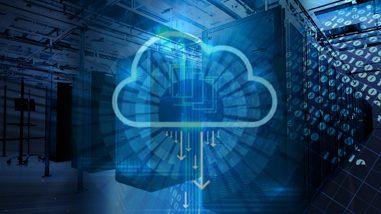It’s that time of the year to look back and ponder on the highlights in 2018, hits and misses, and what can be done better in 2019. In this article we will focus on data center and cloud, trying to strike an equilibrium between the cloud and on-premises implementations.
A lot has already been discussed and researched about the emerging trends, here’s a brief recap through logical assumptions with predictions into 2019 for data centers and cloud.
Edge Computing is smarter than before, needs the right business model
Every IT based company prefers edge computing. Data center operators find it as an opportunity and easier to lighten the burden on central servers, and businesses also find it as an opportunity to achieve minimum response time. Leading vendors are coming up with various models for placing edge computing at base station, with 5G in the tow with national roll out.
Since edge computing is highly priced, it requires right owners who will be bearing the cost burden of it. Will that be the IT vendors or the client enterprise?
We will see more AI mitigating human errors
Data centers have umpteen functionalities that have moving parts – individual servers, cooling system, power system and a robust network that can connect all of these parts seamlessly. Until now, all these parts have been manually configured, monitored and optimized to operate seamlessly.
With the rise of Artificial Intelligence (AI), there is all together a new class of AI that has been entrusted with taking a lead of optimizing the equipment leveraging 24×7 monitoring and adjustments. There have been other examples wherein AI have been implemented constantly, without room for human error element with tireless monitoring and instant system adjustments.
There will be more efforts into leveraging AI for highly efficient data centers in the year 2019.
Growth of Data-Center will Continue
The data center is here to stay. The demand of computers has been exponential and will rise further so. Mainly with the advent of AI and cloud has proven to show high cost as side-effects.
What does that mean for Data center operators?
Data center has been repurposed. Though a certain amount of workload will be allocated to the public cloud service providers, the remaining critical percentage of workload will be taken over by the data centers. This entails anywhere massive data sets like BI, analytics, AI and ML because moving all these platforms to cloud will be quite an expensive affair.
Against the backdrop of all these changing trends, data centers have taken the center stage, versatile and powerful than before.
Microservices and Serverless Computing more in-vogue
Virtualization needs a complete range of operating system which can also limit the number of virtual machines on server, with huge memory. The most appropriate solution to that is containers or to say microservices and at advanced levels aim at serverless computing.
Containers are small elements with 10MB memory space, whereas a virtual machine has more GB of memory and serverless functionality has single function app which is smaller. While the apps are transforming to smaller modular pieces from the monolithic setup, containers and serverless will become more in demand – both on-premise and on cloud.
The underlying principle to rising demand of containers or serverless is that these technologies were created to work both on premise and on cloud and facilitate easy migration, and as a result become a part of the rising demand.
Bare Metal will continue to Grow
Bare metal means operations without software. You rent or own CPUs, hard drives for data storage, then you offer your own software stack. Bare metal works on ‘lift and shift’ principle wherein you move your entire computed bulk from data center to your cloud provider unaltered, putting the OS, apps and data in third party’s data center.
Major enterprise software vendors would naturally want their customers to increase the usage of their software and operate within their data center than shift to SaaS vendors. However, there is a likelihood of these trends to change and get into bare-metal scenario.
Cloud Providers in race for Desktops
There are major cloud vendors who have entered the race of leading the virtual desktop market. With Windows 7 at its penultimate stage, 2019 will be a watchful year to lookout for transitions. However, an impending question is will users directly take a plunge to Windows 10 and continue to reinstate the market hold of brand Microsoft, or will they experiment with AWS Workspaces and Google Chromebooks.
Conclusion
As the cloud and data centers continue to evolve and work on more digital strategies, your business operations will heavily rely on the robustness and seamless integration of your IT ecosystem for new platforms and support new initiatives.
Let us know your thoughts, opinion on emerging trends and feedback on our blogs. Please leave a comment below.
References
https://www.datacenterknowledge.com/manage/be-aware-these-5-data-center-trends-2018
